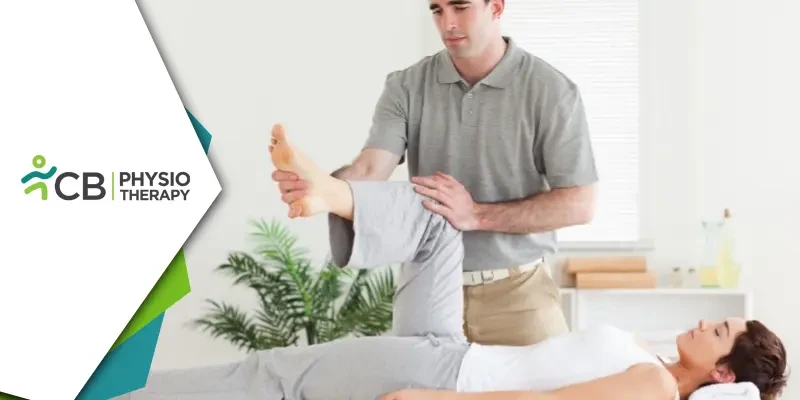Proprioceptive Neuromuscular Facilitation (PNF) is a highly effective therapeutic approach used by physiotherapists to improve patients' strength, flexibility, and coordination. Originating in the mid-20th century, PNF has evolved into a cornerstone technique within the field of physical therapy, offering numerous benefits to a wide range of patients. This blog aims to explore the fundamentals of PNF, the patient populations that can benefit from it, and the specific advantages it provides.
What is Proprioceptive Neuromuscular Facilitation (PNF)?
PNF is a method of promoting or hastening the response of the neuromuscular mechanism through stimulation of the proprioceptors. It involves stretching and contracting muscles to improve muscle elasticity and facilitate greater functional movement. The technique leverages the body's proprioceptive system, which helps sense body position and movement, to enhance motor learning and neuromuscular control.
Core principles of Proprioceptive Neuromuscular Facilitation (PNF) include:
1: Manual Resistance: Applied by the therapist to strengthen muscles.2: Stretch Reflex: Utilized to enhance muscle length and flexibility.
3: Irradiation: The spread of muscle activity in response to resistance.
4: Successive Induction: Stimulating stronger muscles to enhance weaker ones.
5: Reciprocal Inhibition: Contracting one muscle group to relax another.
Techniques of Proprioceptive Neuromuscular Facilitation (PNF)
PNF employs several specific techniques, each with its own purpose and application:1: Rhythmic Initiation: Used to teach the patient the movement pattern. It involves passive movement, followed by active-assisted movement, and finally active movement against resistance.
2: Hold-Relax (HR): Involves an isometric contraction of the target muscle group followed by a passive stretch. This technique is effective for increasing range of motion (ROM).
3: Contract-Relax (CR): Similar to hold-relax, but after the isometric contraction, the patient actively moves the joint into the new range, enhancing flexibility and muscle relaxation.
4: Slow Reversal: Alternating between concentric contractions of opposing muscle groups without relaxation. This technique enhances coordination and strength.
5: Agonistic Reversals: Combines concentric and eccentric contractions of the same muscle group. It improves muscle endurance and control.
Patient Populations that Benefit from Proprioceptive Neuromuscular Facilitation (PNF):
PNF is versatile and can be beneficial for a variety of patient populations:1: Orthopedic Patients: Individuals recovering from joint surgeries, fractures, and muscle injuries often benefit from PNF. It helps restore strength, flexibility, and joint stability.
2: Neurological Patients: PNF is particularly useful for patients with neurological conditions such as stroke, multiple sclerosis, Parkinson's disease, and spinal cord injuries. It aids in improving motor control, coordination, and functional mobility.
3: Athletes: Athletes use PNF to enhance performance by increasing muscle strength, flexibility, and overall neuromuscular function. It also helps in injury prevention and recovery.
4: Pediatric Patients: Children with developmental delays, cerebral palsy, and other neuromuscular disorders benefit from PNF. It supports motor learning, strength, and functional movement.
5: Geriatric Patients: Older adults facing age-related muscle weakness, balance issues, and reduced flexibility find PNF helpful in maintaining independence and improving quality of life.
How Patients Benefit from Proprioceptive Neuromuscular Facilitation (PNF):
The application of PNF provides numerous benefits that significantly impact the patients' recovery and overall well-being:1: Improved Flexibility: PNF stretching techniques, such as hold-relax and contract-relax, are highly effective in increasing muscle length and joint range of motion. This is crucial for patients with limited mobility due to injury, surgery, or neurological conditions.
2: Enhanced Strength: By incorporating manual resistance, PNF helps in building muscle strength. This is particularly beneficial for patients recovering from musculoskeletal injuries or surgeries, as well as those with neurological conditions that cause muscle weakness.
3: Better Coordination and Motor Control: PNF patterns mimic functional movements, helping patients relearn and refine their motor skills. This is especially important for neurological patients who need to regain control over their movements.
4: Pain Reduction: Through improved flexibility, strength, and muscle balance, PNF can help reduce pain. Techniques like hold-relax can alleviate muscle spasms and tension, providing relief to patients with chronic pain conditions.
5: Increased Proprioception: PNF enhances the body's ability to sense its position in space, which is crucial for balance and coordination. This is beneficial for athletes looking to improve performance, as well as for elderly patients at risk of falls.
6: Functional Mobility: For many patients, the ultimate goal of therapy is to regain functional independence. PNF techniques facilitate the recovery of movements necessary for daily activities, such as walking, reaching, and lifting.
Incorporating PNF into a physiotherapy regimen requires skill and understanding, but its benefits are profound and far-reaching.

